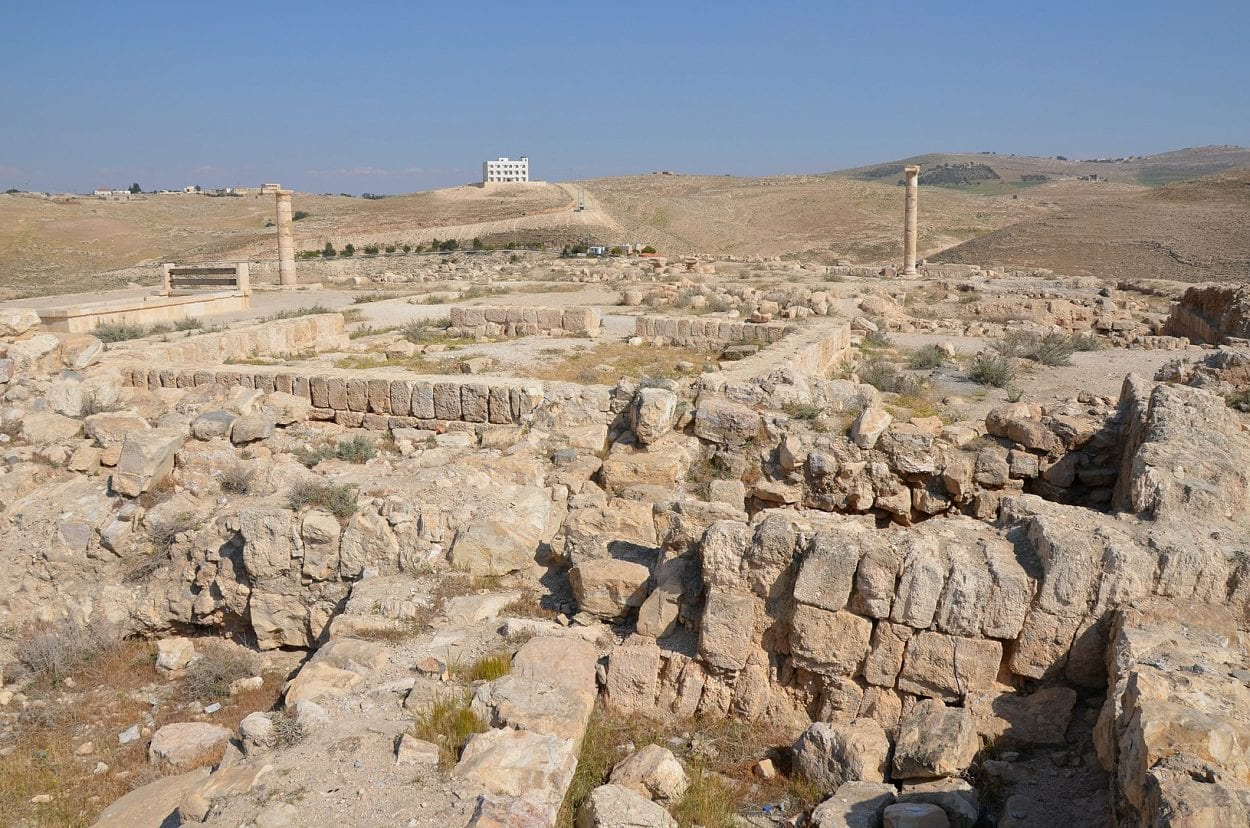Machaerus is an archaeological site and a fortified palace, located on the eastern side of the Dead Sea in present-day Jordan.
The earliest evidence of occupation dates from the reign of the Hasmonean king, Alexander Jannaeus, who ruled Judea and the surrounding regions between 104-78 BC.
Alexander Jannaeus’s rule was considered cruel and oppressive, with never-ending conflict that expanded the kingdoms territories to include most of Palestine’s Mediterranean coastline and regions surrounding the Jordan River.
Jannaeus built the early fortress on a strategic vantage point, visible on the horizon to other Hasmonean citadels to signal in the event of attack for reinforcements. The fortress would later be destroyed during an internal conflict between Hyrcanus II and Aristobulus II, that led to the intervention by the Roman General Aulus Gabinius in 57 BC.

Herod I, also known as Herod the Great reconstructed the fortress in 30 BC, to be used as a military base to safeguard his territories east of the Jordan. According to the Roman author, Pliny the Elder (Gaius Plinius Secundus), “Machaerus on the south, at one time, next to Jerusalem the most strongly fortified place in Judea.”
Herod was a Roman client king of Judea (referred to as the Herodian kingdom), where he commissioned the construction of many major colossal building projects, such as the port at Caesarea Maritima, the fortress at Masada, the Tomb of the Patriarchs in Hebron, and the renovation of the Second Temple in Jerusalem.
Herod’s fortress was a complex system of fortifications that utilised natural geological features, watchtowers, and a large defensive wall, to protect an upper palace and lower city. The palace contained a peristyle courtyard, a southern courtyard, protruding bastions, a mikvah (a pool used for the purpose of ritual immersion in Judaism to achieve ritual purity), two tricliniums (formal dining rooms), bath houses, and several store rooms.

After Herod’s death, Machaerus was passed to his son, Herod Antipas, who ruled from 4 BC until 39 AD. It was during this time, at the beginning of the first century AD, that John the Baptist was supposedly imprisoned and beheaded at Machaerus.
During the Great Jewish Revolt, Machaerus, along with Herodium and Masada were the last three fortresses held by Jewish fighters after the fall of Jerusalem in AD 70 to the Romans. The Legio X Fretensis, led by legate Lucilius Bassus advanced on the fortress in AD 72, resulting in Machaerus being completely destroyed, leaving only the foundations intact.
Header Image Credit : hikinginjordan – CC BY-SA 3.0







